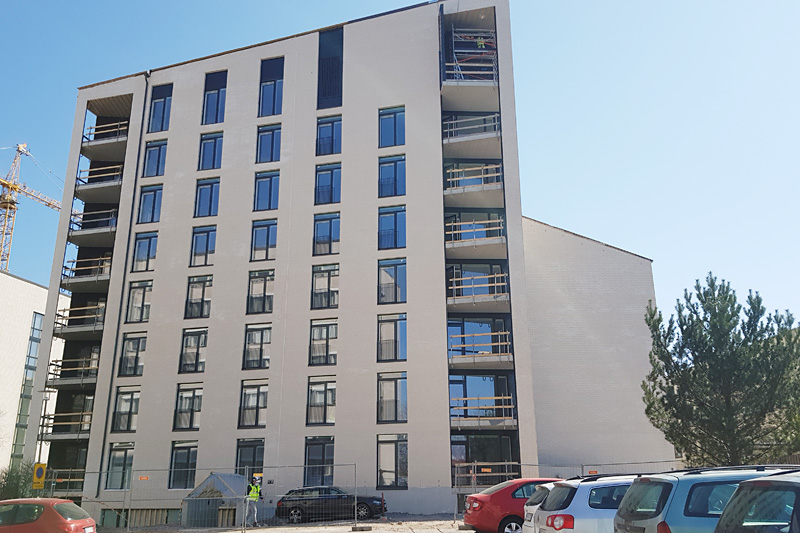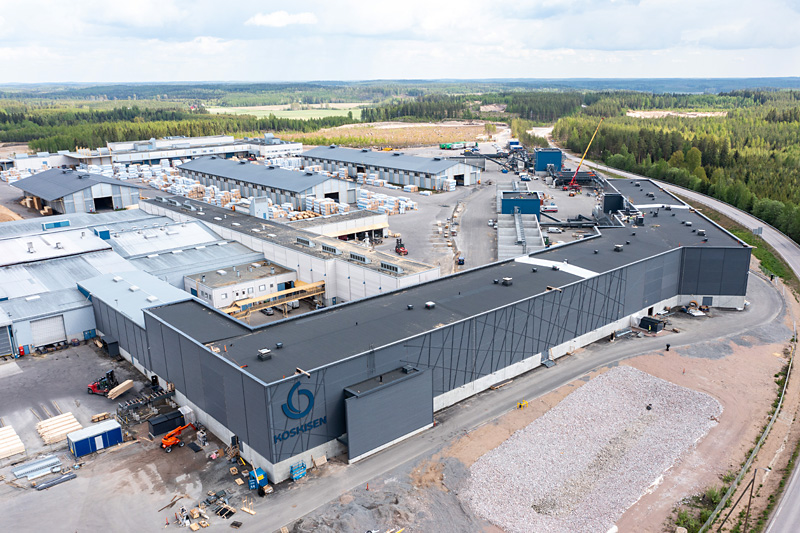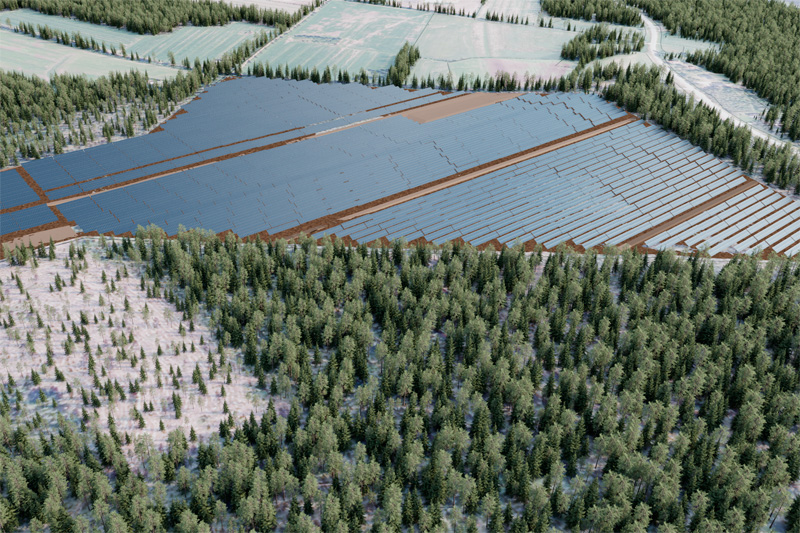Successful complementary construction headed by Fimpec

Fimpec’s real estate project KOY Rautalammintien Huippu in Helsinki’s Vallila district has been completed. The project, an eight-storey apartment building intended for student housing, was a demanding complementary construction project. Everything went smoothly and the building now forms an impressive part of the old neighbourhood.
In August 2021, the building KOY Rautalammintien Huippu was completed in the Vallila district of Helsinki. The eight-storey apartment building houses 133 student flats and was built as a complementary construction project, meaning amidst the existing stock of older buildings. From the outset, the project was carried out in close collaboration between the client, architect, city planning and building control authority.
The building is located on top of a hill, and the eighth floor offers impressive views over the rooftops of Helsinki, including the Linnanmäki amusement park and the sea. The building is also a great success from an architectural standpoint. Despite the surrounding building stock from the 1950s and ‘60s, the new building blends in perfectly with the rest of the neighbourhood.
“Although the building is modern and new, it looks as though it has always been there,” says Fimpec’s Soile Perjus, who was in charge of project management and construction supervision on the project.
Successful project opens up path to student housing construction
KOY Rautalammintien Huippu is a joint real estate project of several student housing organisations and student nations, and it chose Fimpec to provide construction management services for the project. The building was constructed over a period of 18 months from 2019 to 2021. Fimpec took part in the project with its wide range of services. Project management, building systems supervision, construction supervision, cost monitoring and safety co-ordinator and moisture control co-ordinator tasks were under Fimpec’s responsibility. A total of six experts from Fimpec were involved in the project.
Complementary construction in an existing urban environment always brings its own challenges to a project, but thanks to Fimpec’s solid expertise, the challenges in this project were also successfully handled. A civilian shelter is located in the bedrock under the building, so the excavation work had to be carefully thought out; the rock wall between the building and the shelter must be a certain height. The only surprise during the project was the exhaust pipes for the bedrock shelter’s back-up generators. The pipes were old, and they ran right along the building’s facade, so they had to be moved. This was a challenging project, because solutions approved by the building supervision authority had to be found.
“There were no other actual setbacks, however, and there was also very little need for additional work and modifications. Overall, the project went very smoothly,” says Soile.
For Fimpec, this project also opened up a path to other student housing construction. The project was managed very well, and the hope is that more projects like it are in store.
“Student nations are commissioning new student apartment buildings, and I believe that we have a good chance of being part of such collaborations in future, having hopefully made a good first impression with this student housing project,” says a pleased Soile.
“Fimpec was a good choice for our project. Collaboration with the company worked well throughout the entire project,” says Markku Tiensuu, a representative of the Häme Students Foundation.


